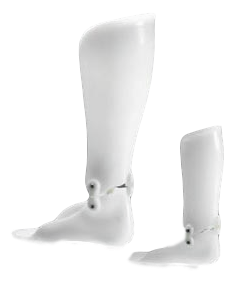Who can benefit from a Neuro Biomechanical Assessment?
Biomechanical changes in walking commonly occur as a result of a number of neurological conditions which alter the way in which the way body functions. Our Orthotists at our biomechanics and orthotics clinic across Scotland have specialist knowledge in the management of these conditions, and can provide assessment and knowledge on how orthotics can assist with:
Various neurological conditions can have a dramatic effect on how the nervous system effects normal biomechanics.
The reason for this is that the signals from the brain are either interrupted or are altered in some way, which in turn has an effect on muscle control during movement or walking.
The altered biomechanics can have an effect on gait and leaves some people struggling to walk safely or efficiently. A neurological biomechanical assessment, looks specifically at this area and how to restore a biomechanical pattern which is safer and more efficient.
What happens at an assessment
Much of the general biomechanical assessment, detailed below, is relevant within assessing patients with neurological conditions. The big differences are related to changes in muscle tone that take place with many of these conditions. Increased tone (spasticity) or flaccid paralysis often causes problems with movement and an understanding of this is required to understand the primary reason for any altered biomechanics.
Defining the Problem
The most important part of the biomechanical assessment is listening to the patient to understand the problem. It is vital that we understand the issue you have come to see us about from your persective.
Often other clincians are keen to give patients their view of the problem when really they are not the person living with it. Instead we need to hear it from your side to understand how your problem impacts on you.
We take a history of the current and previous issues you may have as well as a full medical history to inform what may be important factors to consider before starting our assessment. Equally, we need to understand what the patient is expecting from us.
Static Alignment & Range of Motion
Once we have have taken a history we assess your body alignment including, your feet/ankles. legs, knees, hips, spine and shoulders usually standing to check for any alignment issues. We then also assess the alignment and movement of your joints when moved (passive and active movement) to check against normal limits.
Any signs of potential alignment issues, muscle weakness or imbalances are recorded and discussed with you as the assessment takes place.
Sometimes it easier if you bring shorts or leggings, however it is not always necessary dependant on where your issues are
Dynamic Alignment & Video Gait Analysis
Sometimes the problem you have with the way you walk (your gait) is not always obvious to the human eye. This is why after the assessment of your alignment we look to see what happens when you move.
This in essence a way of confirming our findings from the static aligment and range of movement assesment. your gait is analysed using video gait analysis equipment to allow us to look in more detail at exactly what happens when you walk or run.
Often with biomechanical issues you will see compensatory movements or "trick" movements that your body adopts (without you being aware of it) to try to overcome your underlying problem. Video gait analysis as part of the assessment helps identify these.
Patient Feedback, Diagnosis & Prescription
The final part of the process is feeding back the findings of the biomechanical assessment through slow motion video gait analysis and the assessment findings.
A full and honest view of the possible treatment we can offer you, or alternatively we will advise on the possibility of us referring you to other members of our team for treatment.
For any orthotics/insoles that we may prescribe we make these on site and discuss your options as to how these may may be made to best fit your needs.

